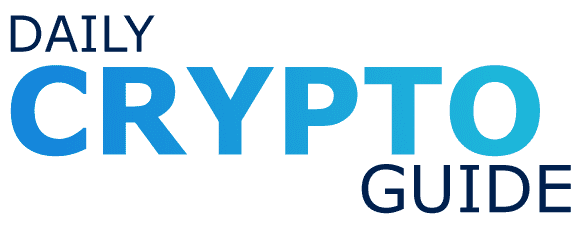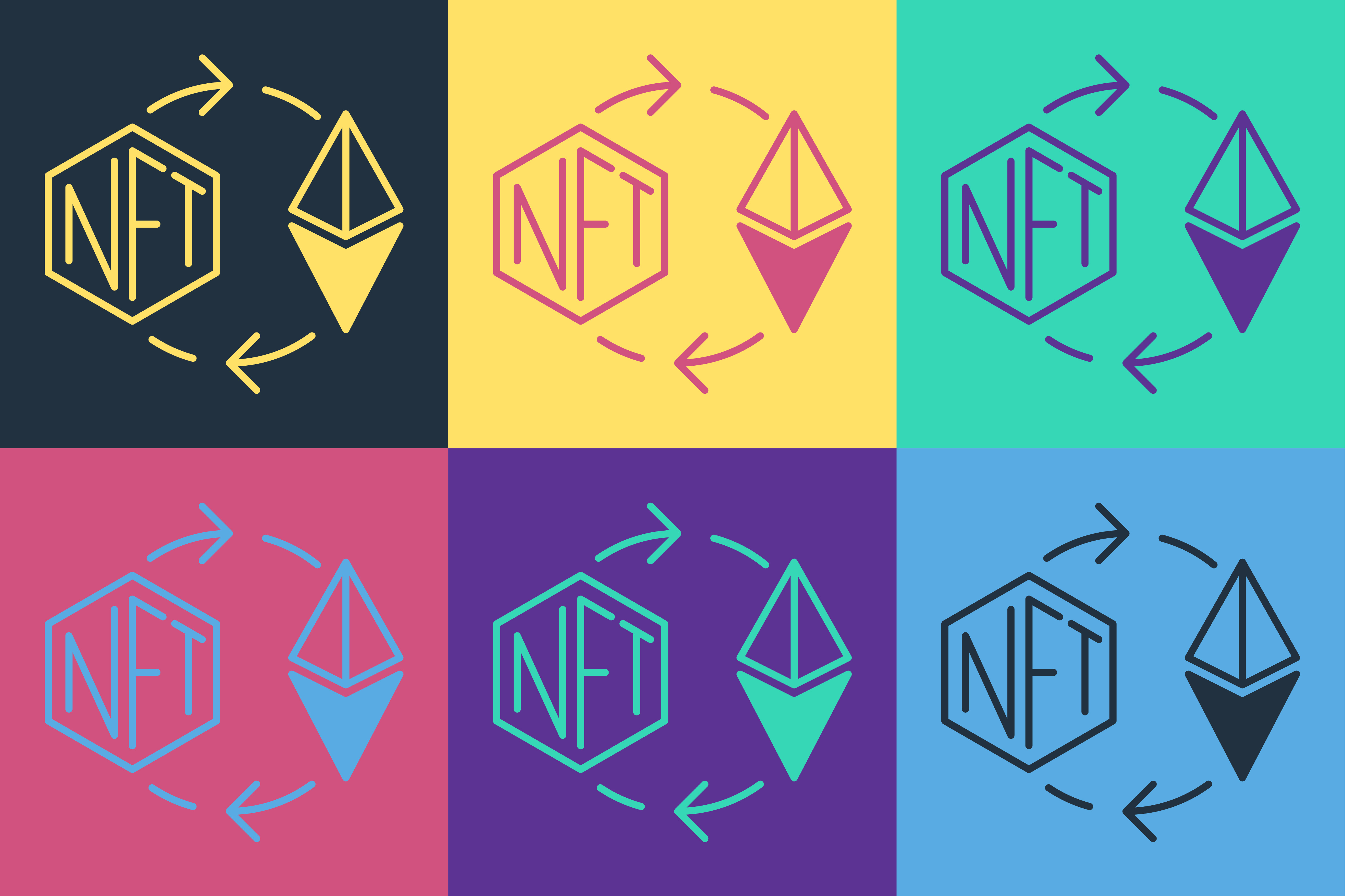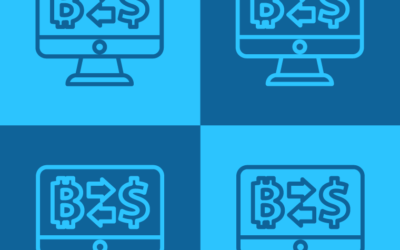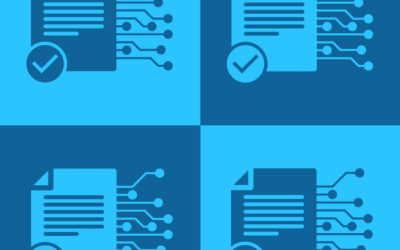Blockchain: What is Blockchain Technology and How Will It Change the World?
The blockchain is complex. But an explanation of blockchain basics doesn’t need to be. To help you understand blockchain and how it works, we’ve put together this comprehensive guide. We’ll explain blockchain technology using simple terms and examples. So, next time you want to join the conversation about blockchain, you’ll know exactly what’s going on.
Here’s what we’ll cover.
History of Blockchain
What is blockchain?
How does blockchain work?
What is blockchain used for?
Benefits of Blockchain
Types of Blockchains
How many blockchains are there?
Does all cryptocurrency use blockchain?
Who owns the blockchain?
Can blockchain be hacked?
Why is blockchain important?
How to Invest in Blockchain

History of Blockchain
Whether or not they know it, nearly everyone is familiar with the first time blockchain was used in practice – Bitcoin! But did you know that this technology was first proposed in 1991?
Who invented blockchain?
Back in ‘91, the concept of a blockchain was first presented by Stuart Haber and W. Scott Stornetta. The idea was part of a research project. Through this project, Stuart Haber and W. Scott Stornetta hoped to develop immutable timestamps for documents.
Then, in 1998, Nick Szabo came up with the idea of using this technology to secure a distributed digital payments system. He called this system Bit Gold. But, unfortunately, Nick never fully implemented Bit Gold.
Finally, in 2009, the infamous Satoshi Nakamoto became the first person(s) to implement blockchain technology. Bitcoin was born.
What is blockchain? A simple definition.
A blockchain is a distributed database that stores digital information.
Ahhh! What does that even mean? Well, think of it like a traditional database – except numerous computers throughout the world hold exact copies of the database.
As data comes in, the blockchain sorts it into blocks. Data is sorted based on when it was received. Once a block is full, it’s chained to the block that was filled before it. At this point, the block is also marked with a timestamp. This timestamp shows exactly when the block was added to the chain. This chain of data is where the technology gets its name – block-chain.
This technology is commonly used to record cryptocurrency transactions. However, a blockchain can store other types of data as well. For example, medical records, legally binding contracts, product inventory, etc.
To help clear up the question of what is blockchain, let’s take a look at an example.
Blockchain Example
Think of a blockchain like a train. Robots load items onto a train car. Once the car is full, it’s attached to the car that was filled before it. The robots then begin loading the next car – and so on.
Of course, this is a simplified example. One of the most important differences between this example and a blockchain is that a blockchain is distributed. So, rather than just one train, robots across the globe would have to load various trains with the same items, on the same cars, at the same time. Before attaching any filled car to the rest of the train, the robots in every location would need to agree. As a result, there would be multiple copies of the exact same train in numerous locations.
Is blockchain a cryptocurrency?
A blockchain is not a cryptocurrency. However, the two are very closely related. In fact, there would be no cryptocurrency without blockchain technology. That’s because this technology is the backbone of crypto. More specifically, cryptocurrency is a form of digital currency, while blockchain is a distributed ledger that records crypto transactions.
Now, remember we mentioned that a blockchain is like a database? That’s true – the two are similar in many ways. However, there are also some important differences. Let’s take a look.
Blockchain vs Database
Both a blockchain and a database can store digital information. However, these major distinctions set them apart:
- Data is stored and structured differently – a typical database stores data in tables. The blockchain, however, stores data in blocks. These blocks are linked together in chronological order.
- A blockchain is distributed – this means that many parties hold copies of the same data. A typical database, on the other hand, is not distributed. Normally, there is one copy of a database and this copy holds all relevant information. The Bitcoin blockchain is also decentralized. This means that no single entity has control over it.
- A blockchain is (essentially) unchangeable – hackers can easily tamper with timestamps and even data entries in a database. However, the structure of a blockchain makes data nearly immutable. This helps protect users against fraud and hacking attempts.
How does blockchain work?
How blockchain works behind the scenes is quite complex. For instance, each block contains data, its hash and the hash of the block that came before it. Now, this is already sounding a bit complicated. But, on the surface, how this technology works isn’t too tricky at all.
For example, consider a transaction on the Bitcoin blockchain. Here’s how it works – in simple terms:
1. A new transaction occurs. It’s added to a block.
Side Note: the type of data stored in a block depends on what type of blockchain it is. The Bitcoin blockchain, for instance, stores transaction data (e.g. the sender, receiver, and amount of coins).
2. All members of the network receive a block once it’s full.
Keep in mind, that a single block can contain thousands of transactions. For example, each block on the Bitcoin blockchain can hold 1MB of data.
3. Members of the network then work together to validate the block.
If consensus is reached, the block is considered valid.
4. Once verified, the block is chained to the block before it.
At this point, the block is also timestamped. Blocks are chained together in chronological order.
Ok – now that you’re more familiar with this technology and how it works, let’s take a look at how blockchain is used.
Blockchain Uses
Most commonly, blockchain technology is used to record cryptocurrency transactions. More specifically, it stores information about crypto transactions.
Bitcoin is the most well-known example of a blockchain in action. That said, there are many innovative use cases for blockchain technology. In fact, some of the largest organizations in the world (e.g. Walmart, Pfizer) have started to use this technology.
Some of the most promising use cases include:
Blockchain for Real Estate
There are many ways that real estate agents, organizations, and even mortgage brokers could use blockchain technology. For example, buyers and sellers could use it to complete payments and financing, process and store contracts, verify property ownership, reduce fraud (through encryption) and provide transparency in real estate deals.
On top of this, the introduction of real estate NFTs could further improve the real estate industry. Consider this – by creating an NFT for your home, you could receive a payment (think of it as a royalty) every time your house sells in the future!
The uses for blockchain in real estate are endless!
Blockchain for the Food Supply Chain
The food industry has already started using blockchain. Currently, companies use this technology to track food products that are in transit. Why is this helpful? Well, it allows organizations to monitor the path and safety of food. If anything arrives at its final destination contaminated, the company can identify the origin of the contamination in a matter of seconds (rather than days).
In addition to food safety, this technology can also trace the freshness and origin of food. This helps eliminate food waste and can even confirm labels like “Locally Grown” or “Organic”.
Use of Blockchain in Banking
Banks are quickly realizing the value of blockchain technology. In banking, it can help facilitate faster, cheaper, and more secure payments, including cross-border payments.
For example, using cryptocurrency and blockchain technology, a person could send a payment from the United States to Europe in a matter of seconds – and for just a fraction of a penny.
In addition, moving transactions and other financial data to the blockchain can help minimize tedious paperwork and human error.
Using Blockchain for Voting
Blockchain technology has the potential to significantly improve the democratic voting system. Using this technology to vote would make it extremely difficult to tamper with votes, essentially eliminating election fraud.
This technology would also make elections more cost-effective and transparent, not to mention the results would be nearly instant!
Blockchain for Supply Chain Management
Blockchain technology can track and record the supply chain of any product.
For example, by using this technology for supply chain management, companies can verify the origin of their products, and get real-time location data.
Blockchain Technology in the Insurance Industry
Using blockchain and smart contracts, insurance companies could manage claims and contracts in a secure, transparent manner. As a result, insurance companies could eliminate manual, paper-heavy processes, reduce costs, and increase processing speed.
For example, a smart contract could help by automatically settling claims. As soon as a customer provided all necessary documentation, the smart contract would confirm and process the claim.
Most importantly, introducing this technology in the insurance industry would help reduce fraud. For instance, by using smart contracts, insurers could eliminate invalid claims instantly. How? Well, the network would automatically reject all duplicate claims.
Think of the time, energy, and money this would help insurance agencies save!
Using Blockchain for Tax Collection and Filings
Organizations are also exploring the use of blockchain technology for tax collection and filings. Not only would it be extremely helpful for collecting taxes, but it would also make tax filings easier, faster, and more transparent.
For example, if each resident had a private key associated with their employment and personal data, the system could automatically calculate taxes and apply tax credits. With the help of a CBDC or other government-backed cryptocurrency, tax payments could also be automated.
Blockchain for Healthcare
There are also many uses for blockchain in the healthcare industry. For instance, this technology can securely store medical records.
This technology can also facilitate the sharing of records between healthcare providers, researchers, and medical devices that record health data. By sharing and linking health data this way, faster, better, and more advanced health care is possible.
Blockchain for Business
The business world will likely benefit the most from blockchain technology. Specifically, those businesses that implement blockchain with smart contracts. In addition to making business deals faster and more secure, smart contracts can help minimize (or eliminate) administrative and legal fees.
For example, car dealerships could use smart contracts to automate sales. In this case, the car dealer would make arrangements for the sale of the vehicle. Then, a smart contract would take care of the rest. So, for instance, the smart contract might specify that, once payment for the vehicle came through, the new owner would receive a digital key. If both the buyer and the dealership followed through (i.e. the buyer sent payment and the dealership added the digital key), the contract would initiate. That is, the dealership would receive the money and the buyer would get the digital key to the vehicle. However, if either failed to hold up their end of the bargain the contract would terminate.
This is a simplistic example, but you can imagine how beneficial a smart contract would be for business deals with many terms and conditions. In fact, a smart contract would minimize or eliminate the need for legal support. That’s because the contract would have all of the terms and conditions pre-programmed into it. If any conditions were not met, the contract would simply terminate. As a result, this would save time, money, and resources.
Blockchain for Patents and Other Intellectual Property
This technology is also useful for establishing intellectual property ownership and completing transactions involving copyrights, patents, trademarks, etc.
For example, blockchain technology and smart contracts could be used to facilitate the sale of a patent – from negotiations and payment to ownership verification and transfer.
As you can see, there are many different use cases for this technology. The examples above only scratch the surface of what is possible!
To help you better understand why blockchain is so valuable for so many industries, let’s take a closer look at the various benefits of this technology.
Benefits of Blockchain
You might be wondering – why is blockchain such a big deal? Well, this technology has many advantages. Below are the most significant benefits and the reasons why the world is so excited about this technology.
A Blockchain is Distributed
All blockchains are distributed. Thanks to this, a blockchain is extremely secure and virtually unchangeable.
To understand this more clearly, consider your home computer. This single computer holds all your valuable information and files. Now consider this – what if something bad happens to it? What if a flood or fire destroys it? What if someone in your household permanently deletes an important document or makes unauthorized changes to a file? In all of these cases, your data could be corrupt or lost forever.
With a distributed blockchain, none of these scenarios are of concern. Why? Because data is spread across a network of computers. In other words, all of the computers in a blockchain network hold exact replicas of the data. Therefore, if one computer loses a record, or records an illegitimate transaction, the others can compare and come to an agreement about what is valid and what is not. As you can see, this eliminates the need to worry about lost, corrupt or falsified information.
Decentralized
A decentralized blockchain can help combat many issues that arise from centralization. That’s because a decentralization removes all control from a central authority. In other words, rather than one person or group of people having control over processes, decisions, and data, a decentralized blockchain distributes this power among a network of people and computers.
Why is decentralization so beneficial? Well, take social media platforms like Facebook and Instagram, for example. A central authority owns these social platforms (i.e. Meta). This means that Meta has complete control over your account and data. So, whatever the top executives at the company say goes. If they want to shut down your account – they can. If they want to sell your data – they can (and will). Decentralization, however, puts control and power in the hands of the consumer. A decentralized social media platform, for instance, would allow you to have complete control and ownership over your account and data. Best of all, you would receive payment for your participation on the platform.
Keep in mind, that not all blockchains are decentralized. A blockchain can be centralized or decentralized. While decentralized blockchains are often preferred, centralized blockchains also have their advantages.
Transparent
All transactions posted to a blockchain are transparent. This means that everyone can see the entire history of a transaction. Even in the case of a private blockchain, all stakeholders can view transactions from start to finish. This, together with the fact that transactions are time-stamped and immutable, makes fraud very unlikely.
This transparency offers many advantages – especially for the public sector. For example, if the government implemented a public blockchain, everyone could see their flow of funds. In many cases, this would help to reduce (or eliminate) fraud and corruption.
Traceable
The transparency of the blockchain makes it easy to trace transactions. All transactions appear on the blockchain, creating a clear audit trail.
In the case of cryptocurrency, anyone can follow this trail and the path of funds – from sender to receiver. As a result, this technology can often help government organizations uncover illegal operations and activities.
Confidential
Now, you’re probably thinking – if transactions are transparent and easily traced, won’t this infringe upon my privacy? Great question!
While it might seem counter-intuitive, this technology can facilitate private and secure transactions. This is because the records stored on a blockchain are encrypted. What this means is that unless you have the public and private keys to decrypt (i.e. “unlock”) the data, you won’t be able to see the details of a transaction. Therefore, although general transactions are transparent and traceable, users can still remain anonymous (in most cases).
Automatic
As you’ve gathered by now, the blockchain is entirely digital. As a result, this technology can carry out processes very quickly. In fact, this technology can complete many processes, including cryptocurrency transactions, almost instantly.
Smart contracts can even automate transactions. This means faster and cheaper transactions that require little or no paperwork! Automated transactions can also help eliminate human error and corruption.
Safe and Secure
As we’ve mentioned, blockchain transactions are encrypted and immutable. This makes it very difficult to tamper with data. Fraud and hacking are also difficult because blockchains are distributed (i.e. information is stored across a network of computers).
Fast and Efficient
Blockchain technology can streamline traditionally tedious, time-consuming, and paper-heavy tasks.
For instance, take our example of using blockchain to complete a car sale. Rather than printing and signing documents, sending money, handing over keys, etc., this technology could automate the entire sales process. As a result, car sales would be faster, easier, and more cost-effectively – without human error.
Information in Real-Time
When information on the blockchain is updated, it’s updated for all network members at the same time. As a result, real-time information is always available. This is extremely beneficial for organizations that rely on up-to-date data.
Take the healthcare field, for example. Using this technology to store patient records, including test results and data from personal health devices, health care professionals would have access to the most up-to-date and accurate information. This could help improve patient care, diagnostics, and more.
Types of Blockchains
Did you know – there are four different types of blockchains? This includes public, private, hybrid, and consortium blockchains.
Learn more about the different types of blockchains and how they work here – What are the different types of blockchains?
How many blockchains are there?
Although there are only 4 different types of blockchains, there are thousands of individual blockchains – and this number is growing every day.
In May 2022, there were over 13,000 crypto blockchains plus hundreds of non-crypto blockchains (e.g. IBM Food Trust).
Does all cryptocurrency use blockchain?
Contrary to popular belief, not all cryptocurrencies use blockchain technology. For example, Hedera Hashgraph (HBAR) uses an advanced new technology known as hashgraph technology.
That said, most cryptocurrencies use blockchain technology, including the biggest players – Bitcoin and Ethereum.
Who owns the blockchain?
No individual or corporation owns the blockchain. You can think of the blockchain like the internet. It isn’t a product or service but, rather, a technology that is available to everyone. So whether you want to build on the blockchain, or just be part of it, you have the freedom to do so.
Can blockchain be hacked?
Once considered impenetrable, hackers have begun to uncover vulnerabilities in this technology. Now, under certain circumstances, attackers can hack a blockchain.
How can hackers attack a blockchain? Well, there are numerous ways – but one good example is what’s known as a “51% Attack”. In this type of attack, a hacker gains control of 51% or more of the network. With this control, the attacker can make changes to the blockchain. Since they control more than half of the network, the network views the hacker’s blockchain copies as the “correct” versions. This gives them the freedom to make changes and even validate falsified transactions.
Although hackers can attack large networks (e.g. Bitcoin, Ethereum), it’s very unlikely. Even if a hacker believed they could pull off an attack on these networks, the cost to do so would be huge!
That said, small networks are especially vulnerable to hackers – specifically those using the 51% attack strategy.
Why is blockchain important?
As you can see, there are many practical applications and benefits of blockchain. While numerous organizations around the world have already invested in this new technology, many more have yet to discover its significance. That said, this technology offers significant benefits for most (if not all) businesses, organizations, and individuals across the globe. As a result, blockchain technology will certainly see significant growth and adoption in the coming decades.
How to Invest in Blockchain
Want to invest in blockchain technology? There are many ways you can do this. But here are some of the best ways to get exposure.
1. Buy cryptocurrency – one of the easiest ways to invest in the blockchain is to buy cryptocurrency.
Many people still view cryptocurrencies as just tokens – like something you would buy to play games at an arcade. But this couldn’t be farther from the truth. People should view crypto projects as technology companies, similar to Amazon and Microsoft. So, when searching for crypto to invest in, look for projects that have a strong, trustworthy team and great utility.
2. Invest in public companies that are building blockchain solutions – forward-thinking companies like PayPal and Square have started to explore the possible use cases for this technology. Finding and investing in publicly traded companies that are focusing on the blockchain is a great way to expose yourself to this new technology.
3. Implement blockchain in your own business – the best way to invest in the blockchain is to learn how you can use it in your own business. This technology is so new that by learning about it now you’ll be ahead of over 75% of the world! Plus, business owners who adopt new technology early often benefit greatly from innovation. So, if you want to get involved – now is the time!
More Crypto Content You’ll Like
What is NFT vs Crypto: Understanding the Key Differences and Similarities
Wondering – what is NFT vs crypto? Unlock the secrets of these digital assets, explore their similarities and differences, and learn how they’re shaping the digital future.
Understanding Leverage Trading in Crypto: How to Amplify Your Gains (+Possible Risks)
Learn what leverage trading crypto is and how it works. Plus, the top exchanges for leverage trading crypto.
3 NFT Smart Contract Examples (Solidity, Vyper and Rust) + What Each Function Means
Explore 3 NFT smart contract examples (in Solidity, Vyper, and Rust) and learn what each function in the code does.



